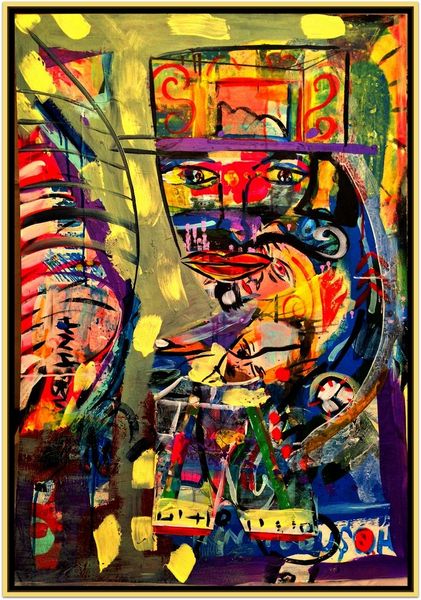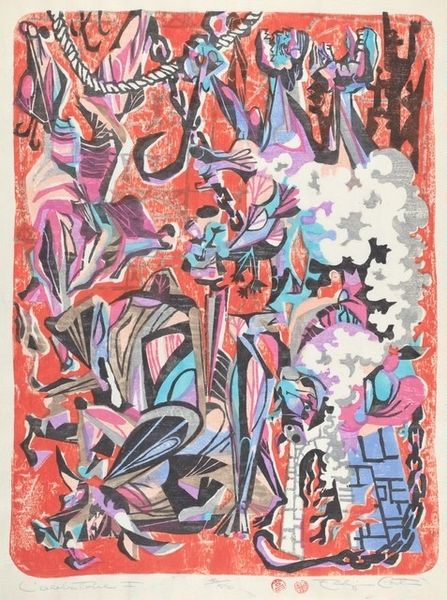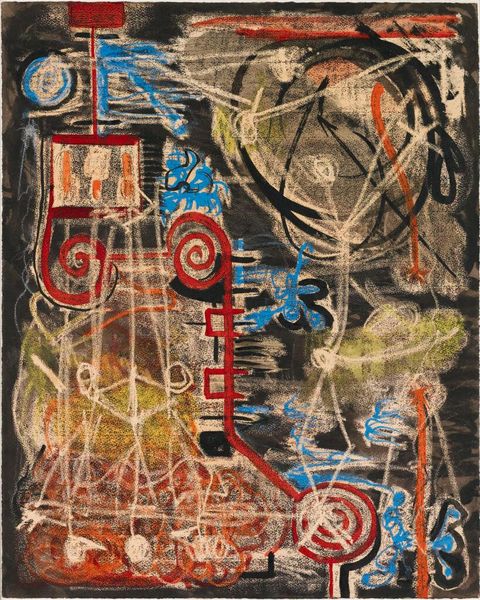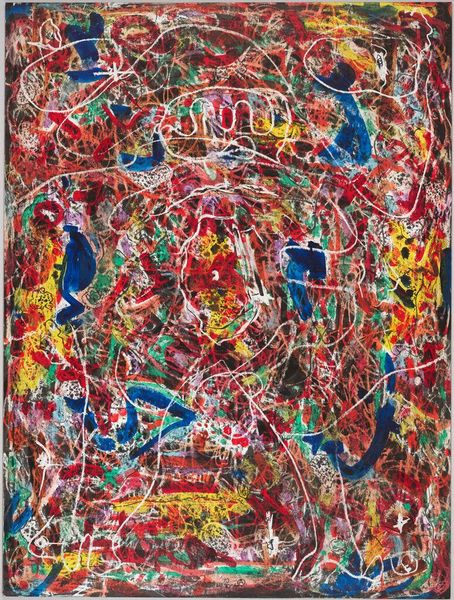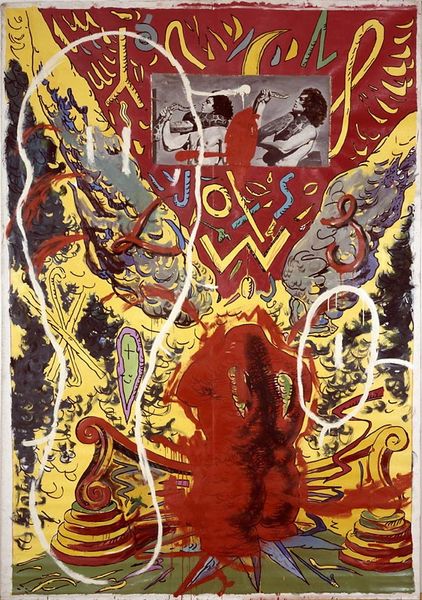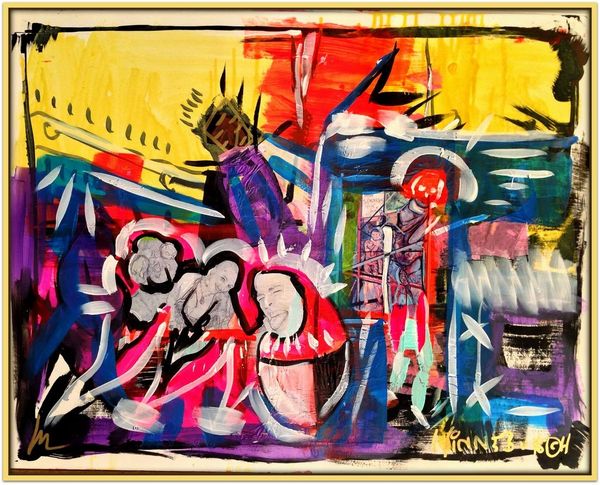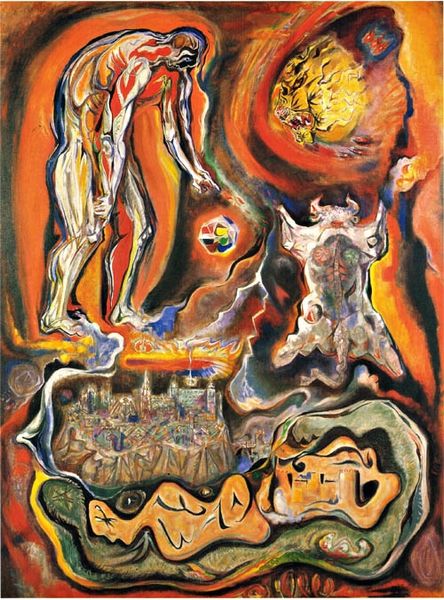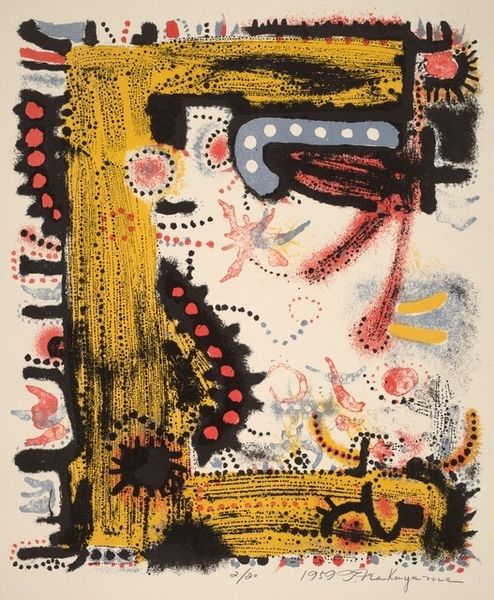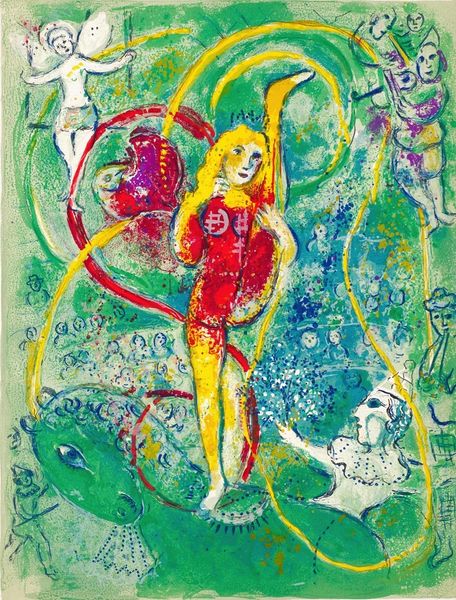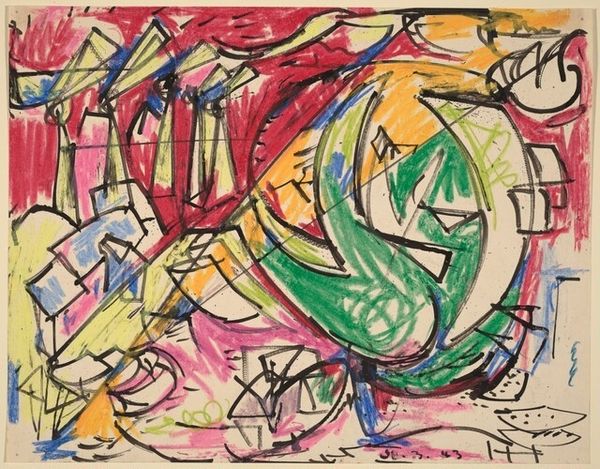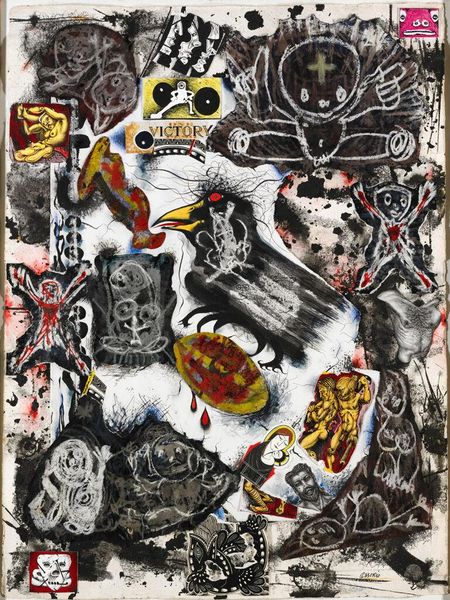
Dimensions: overall: 99.3 x 66 cm (39 1/8 x 26 in.)
Copyright: National Gallery of Art: CC0 1.0
Curator: What a striking piece. We're looking at Alfonso Ossorio's "Perpetual Sacrifice" from 1949. It's a mixed-media work, a melange of paint and drawing. Editor: Whoa. Visually, it's immediately… intense. All these jagged lines and clashing colors—it's almost a sensory overload. You can't look away from it, that's for sure! What a chaotic vision! Curator: It certainly vibrates with emotion. Looking closer, I find it intriguing to consider the artistic process. He was deeply influenced by Dubuffet at this time, exploring art brut and experimenting with materials in really visceral ways. This isn’t just paint applied neatly; it feels like a struggle on the surface. Editor: You know, focusing on the materials themselves, I see that roughness immediately. It rejects any notion of preciousness; it embraces the raw nature of art-making, maybe reflecting postwar anxiety, even societal breakdown, that artists were grappling with then? It seems deliberate, this lack of polish. Curator: I'm also getting a feeling of ritual here. Despite the chaos, the composition seems very consciously arranged with forms emerging from the abstract frenzy. I mean "perpetual sacrifice", a very loaded theme isn't it? I wonder whether Ossorio suggests this through an endless act of creation and destruction depicted in the work. Does anything specific stand out to you within that framing? Editor: Interesting point. I’m drawn to these reoccurring shapes suggesting bones or dismembered parts, scattered across the surface. Maybe there is a dialogue happening between art and body under post-war destruction; making the process of figuration from ruins an effort to rebuild something. Curator: Perhaps "perpetual sacrifice" becomes a generative act of rebuilding rather than purely loss. Maybe that explains why, after initial reaction, this intense piece remains profoundly resonant for me. It leaves me with some hope in humanity's capacity for constant remaking. Editor: It certainly does spark some thoughts about regeneration. Seeing the world in fragments and turning those materials into art of resurrection– quite profound, ultimately.
Comments
No comments
Be the first to comment and join the conversation on the ultimate creative platform.
